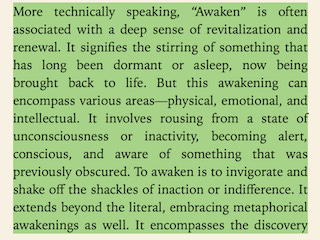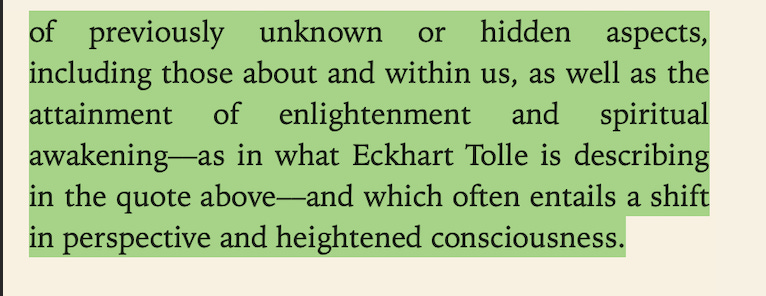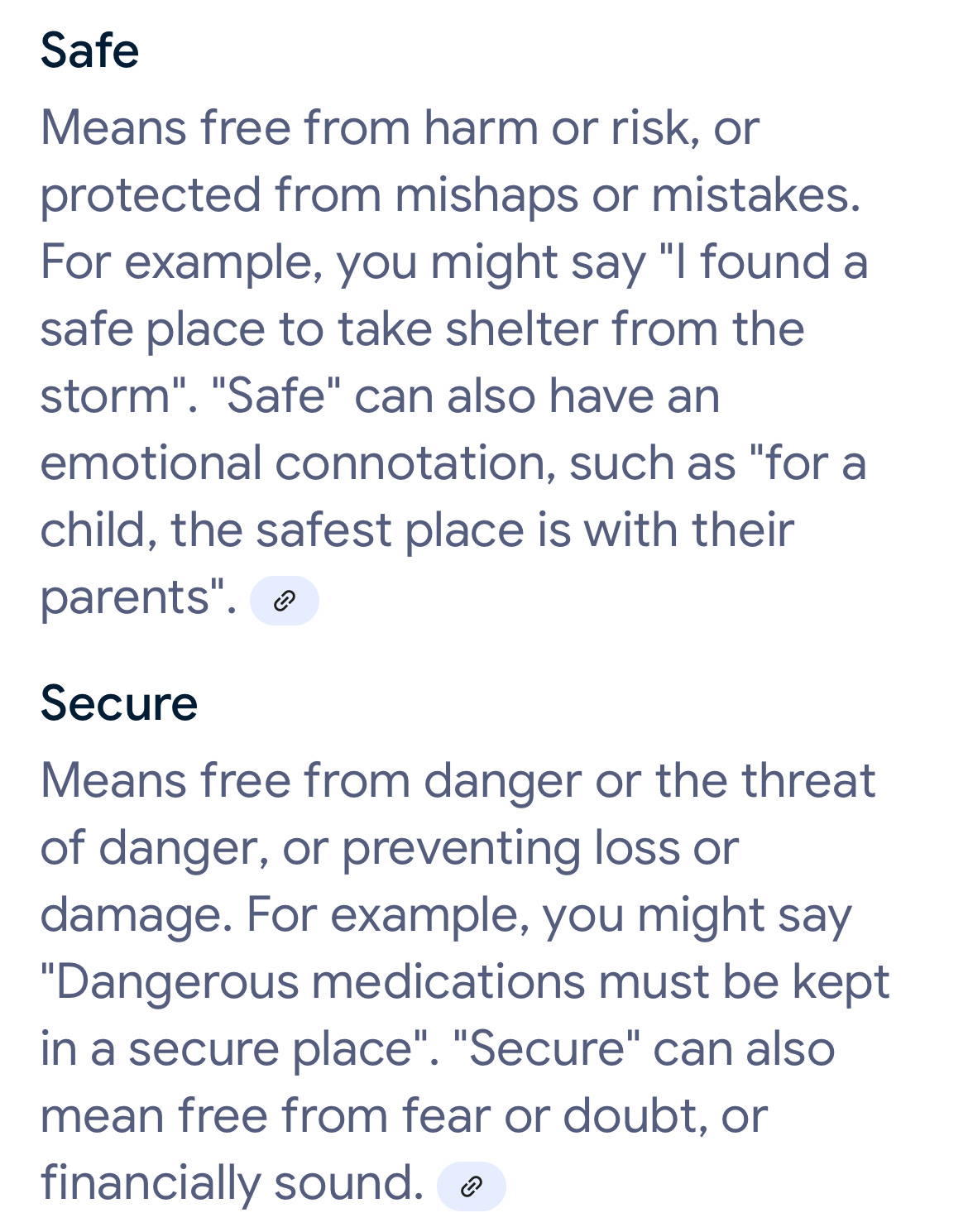Spark | by Suhailah is a Weekly Personal Transformational Newsletter brought to you in the frequency of Love, Authenticity, Freedom, Passion, Creativity, Connection, Independence, Understanding + Spirituality.
Each week’s newsletter includes: #1. At least one quote that I love; #2. A self-inquiry/question/exercise (tools); #3. Story Time/Other Writing of some kind, written by me — This may sometimes be short, and may at other times be long; #4. A book recommendation, centering thought, and/or an affirmation now and again. (more tools)
Quotes of the Week:
“Your power ends where your fear begins.” - Barbara Marciniak
“You will be shaken until you awaken.” - Author Unknown
“Heal, so you can hear what’s being said without the filter of your wounds.” - Author Unknown
“Every man is a golden link in the chain of my good.” - Florence Scovel Shinn
Self-Inquiry/Journal and/or Meditation Prompts/Tools:
This week I want to share a tool and a technique that you can try on your own if you wish. It’s called EFT or the Emotional Freedom Technique. Some people call it “tapping,” but there is also another kind of tapping and this is not that. My spiritual father, Reggie, first told me about this well over a decade ago and I’ve used it for a number of things on and off over the years.
Below is some background, but please do your own research and see if it sounds like something for you.
EFT (Emotional Freedom Technique), often referred to as “tapping,” is a form of psychological acupressure that involves tapping on specific points on the body while focusing on emotional issues or physical pain. It's designed to help people release negative emotions and reduce stress by balancing the body's energy system. Here's a breakdown of what EFT is and its foundations:
Process: EFT involves tapping with your fingertips on various meridian points (specific points on the body used in traditional Chinese medicine like with Acupuncture) while focusing on a particular issue, such as anxiety, fear, or physical discomfort.
Goal: The goal is to reduce the intensity of the negative emotion or physical sensation, promoting emotional healing and physical well-being.
Typical Uses: EFT is commonly used for stress relief, anxiety reduction, overcoming fears, alleviating physical pain, and improving overall emotional health.
Studies and anecdotal evidence suggest that EFT can be effective for reducing anxiety, PTSD symptoms, and other emotional issues. It is often praised for its simplicity and accessibility. - Many people, including myself and others I know, find EFT helpful as a self-help tool for managing stress and emotions.
I did not learn EFT from this man or this video, but I found this on YouTube that explains EFT pretty clearly and demonstrates how to do it: EFT Explained
This is all considered energy work, or energy psychology, and there are plenty of sources, charts, and videos that you can Google and where you can read more about EFT.
Audio | My Relationship with Fear:
Story Time:
“You have convinced yourself that he is a source of security when, in fact, he is the opposite.”
My healer, Kim, said this to me years ago when I felt trapped in a relationship I had no business being in any longer.
There have been a handful of very distinct and pivotal moments in my life when the words someone says to me, in the exact moment that they say it, have woken me up from a deep slumber that I did not know I had been in because, as far as I knew it, my eyes were wide open and I was not asleep; This was one of those times.
In these cases, there is a physical version of me that is obviously “awake” and moving through life and what I need to do on any given day, but there is a part of me that has gone unconscious or that is still unconscious, or operating from my subconscious. (I’m going to write/talk about what this means - consciousness - in another newsletter at some point.)
Excerpt above from my book “Awaken the Brand by Suhailah, Unleash Your Personal Potential Through Building Your Brand.”
As someone who had “abandonment issues” —issues, that I was keenly aware of for most of my life after I first learned what they were, and that I thought I had worked through in all of the different, unexpected, sneaky disguises, attachment styles and in how they showed up in my behavior, responses, and habits in both my personal and professional life—I was stunned at the realization that I had, somehow, fallen back into this particular abyss.
I am someone where the sense of safety is something I have been very much aware is needed in my life. Still, I never really stopped to consider, nor did I realize, that there was a difference between safety and security—not that it mattered in the context in which Kim said this to me where she meant mental, emotional, and physical security. —Oh my god, how had I gotten here with all that I know and think that I am.—I was truly shaken.
As far as my level of consciousness goes, it was the first part of what she said that woke me up and brought me to my own attention. As far as committed relationships and intimate partnerships go, it was the last part of what she said that really felt like a punch in my stomach—or to my mind and my heart— “when in fact, he is the opposite.” I wanted to cry. And I remember, as my mind scrambled to stabilize and ground itself in this new understanding in my session with her that day (we were on the phone for almost two hours), all I could think was: What is the opposite of security?
I knew what she meant in the moment that she said it, but when I looked up safety vs. security just now, this came up:
On that day and the days that followed my conversation with Kim, the thought made me shiver and shrink inside of myself in the awareness that I had fallen into this obvious and glaring false sense of security by being and staying in this relationship.
Security—something I had worked diligently to establish for myself on both the outside, and the inside (or so I thought) my whole life.
I am someone who has done a tremendous amount of “work on myself.” I dislike the word “work” and that term altogether, but for lack of a better one, anyone reading this who engages in self-development to shift and change their internal life and so their external experience of it knows what I mean. So when Kim said this to me, it absolutely blew my mind and metaphorically sat me down. It stopped me in my tracks. How did I—how could I have—fallen back to sleep again?
I felt so small, so vulnerable, so uncovered – unprotected – in that moment. By life and by myself, mostly. It’s hard to explain, but I remember the feeling.
Side note: I am not one who lives in the past. I don’t find a need to review it in my mind, nor discuss it often unless I am referring to it for something worthy and worthwhile, usually, for something I am learning about myself. When I tell these stories in this newsletter or otherwise, I try to find a balance between sharing my experiences in the hope that they might spark awareness in someone else and help them, without villainizing the people or environments in which I had these experiences, unless they are genuinely and intentionally horrible and evil human beings.
I find that often on the journey of healing and personal growth, we might think we are making progress when we isolate ourselves, reading or listening to something inspiring, or working with healers, therapists, or talking to friends—whether one-on-one, in groups, in church, spiritual communities, or other settings. But the real test of our growth comes when we reenter the situation or the next situation—whether it’s a job, a relationship, a marriage, etc. That’s when we truly see how much we’ve evolved, changed, developed, or grown, where and how our patterns show up and to what degree. It’s in this state of awareness that we can then clearly see what’s ours to manage and own versus what belongs to the other person.
In this way, it’s impossible to accurately gauge our progress without these life experiences—most of which involve other people. That’s why I view these situations as lessons and see life as a school of learning. This perspective also allows me to “bless” the situation and move forward once I do, and to understand that every event is designed to propel me forward in my growth and awareness, ultimately, for my highest good. I have come to know that there is always something in it for me.
I share these stories within that context and with that intention because, at the end of the day, I believe change starts with the individual—me, in this case. You, in your case. So, it’s more or equally about what we’re learning about ourselves. At the same time, when we explore our own depths, this helps us understand what the other might be experiencing or might have gone through, allowing us to be more empathetic and compassionate human beings, even if we can no longer remain or stay connected to the people, relationships or environments we were in.
Okay. So back to this story…
In the context of what Kim was telling me—where she meant the impact of this relationship on my emotional, mental, physical, and even financial well-being—this wasn’t about what my partner had or didn’t have in a materialistic sense. It was about his capacity, or rather his lack thereof. And then my responses to his inability to communicate and respond effectively to his life, let alone to ours together, were not only leaving me depleted and doing all the heavy lifting in the relationship, but they were also putting me at a deficit and at a loss (including putting me in the negative financially, for no good reason) —leaving me damaged, literally sick, and in danger in many ways.
On one hand, being in this relationship on some level must have made me feel safe, probably simply because we were under the same roof, shared shelter together—maybe like when you share an umbrella together when it rains. (Which in my case, I now know was or had somehow become co-dependency at best, trauma bonding at worst.) But what Kim was saying was that I had convinced myself that he and this relationship were a source of security. But if I just looked around and woke up, I’d see that what I believed was happening in the relationship was not the reality. In fact, the opposite was true.
But there’s a difference between being accountable and being responsible. While I naturally wanted him, as my romantic, intimate, and life partner at that time, to be both more responsible and also accountable for his actions—something the most tender and wounded part of me desperately needed—I am ultimately responsible for myself and my own life, not him or anyone else. It was also my own lack of inner security—my insecurity and so my fear—that prevented me from trusting my ability to gather the necessary internal resources to move forward on my own. This kept me from taking the necessary action sooner to restore my built in sense of security. In this case, that meant realizing I had to leave, and then actually doing so.
What had been stopping me? When and how had I given away my own innate power in this way? Surrendered and laid down my own divinity?
It was fear. For me, it has always been fear. For most of us, it is always fear. Especially when making decisions we know we need to, but for some reason are not. It’s like having a Mexican stand-off with our own selves.
You don’t have to be a marketer or brand builder like me to look around and realize that fear is the biggest and most successful product ever produced, marketed, and sold to humanity. As far as global brands go, there are few greater than fear. Whether it is used consciously or unconsciously—by well-meaning people or those that are…not so much—in every industry and in every sector of society and business, from beauty to health and wellness to government, fear is there. In how we see relationships of all kinds played out on most TV shows, in movies, and in real life—fear is there. These are the examples that we have been given and the frequencies most of us surf on a lot, if not most, of the time.
Fear keeps us in jobs, business ventures, careers, relationships, marriages, friendships, routines, habits, and a myriad of things that might, in some instances, have long outstayed their welcome and their purpose in our lives. And in other instances, fear keeps us from what could be the next thing for us, as our lives call us forth at the level of destiny and what God/Source really had planned for us next.
Fear is not a simple thing to navigate, it is layered and it is complex. And, at the same time, as long as we are human on this planet with a memory bank and a nervous system built the way that it is, we will likely come up against it time and time again and it is unavoidable in terms of the things we need to learn to face and dissipate.
This is why it’s so important to “do the work” on ourselves (including learning about what it takes to regulate our nervous system) so that we can become aware of the places we are stuck and are still asleep, or have gone back to sleep inside of ourselves, and where fear is driving our decisions—or our inability to make them.
The places within us that tell us things are true when they are not, never were, or are no longer true—whether internally or in our external environments—need to be recognized so that we can establish true safety and security within ourselves and our lives, and ultimately free ourselves from our own abyss, and show others that they can do the same.
✨🙏🏾🩵
Affirmation (as an invitation to something greater that what you might be currently experiencing): I release fear and embrace trust in the process of life. I am safe, supported, and capable of facing whatever comes my way.
Image Credit at top (of snake): Photo by Jan Kopřiva on Unsplash
Copyright © 2024 Suhailah H. Yoba. All rights reserved.








